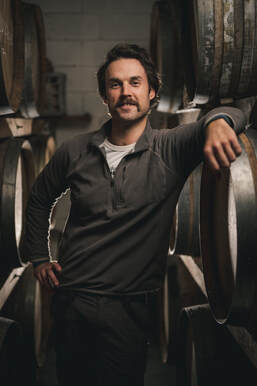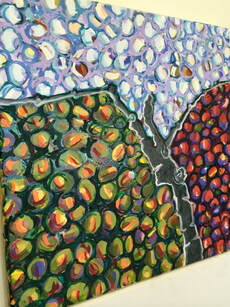My Philosophy and Style

Making wine is ultimately a fusion of Mother Nature and human emotion; it’s a creation of something special. Confidence is required to believe in the process and sometimes all we need is our intuition and inspiration as guide. -The best wines come from the heart.
Drawing on this ideology, the Alkimi style is to limit all winemaking techniques to “Basic principles”, where only traditional (or old school) techniques are used to mealy chaperone the grapes through their alchemical transformation into wine.
We want to make memorable wines, and for us the most memorable wines are the ones that show a distinct personality; personality of not just provenance and vintage, but also personality of the people who helped make them. Wine should always tell a story; from first glass to the last, from one year to the next.
Cheers,
Stuart
Drawing on this ideology, the Alkimi style is to limit all winemaking techniques to “Basic principles”, where only traditional (or old school) techniques are used to mealy chaperone the grapes through their alchemical transformation into wine.
We want to make memorable wines, and for us the most memorable wines are the ones that show a distinct personality; personality of not just provenance and vintage, but also personality of the people who helped make them. Wine should always tell a story; from first glass to the last, from one year to the next.
Cheers,
Stuart
The Brand Significance
The Name
The brand name is taken from the phonetic spelling of Alchemy. Alchemy is a mix of Science, philosophy and mysticism in which base materials are turned into "gold".
The Symbols
The symbolism of the Alkimi brand draws upon the representation of the 4 essential elements of Alchemy: fire, water, air and earth. With combinations of these elements any substance can be created. Read more here
The Artwork
Mistral Series
The label artwork was created by abstract expressionist, Christopher Shelton. Stuart and Chris have shared many glasses of wine and day trips around Victoria talking about art, wine and labels. This original oil on canvas piece came from Chris' interpretation of a number of photos taken by Stuart.
Yarra Valley Series
The artwork was created by Duncan McDade. Duncan is an animator and interactive designer based in Berlin, Germany. He created moving images of grapes, then specific frames were captured and transposed to the labels. This is his interpretation on what happens during the winemaking process; many layers coming together and moulding around each other,
The brand name is taken from the phonetic spelling of Alchemy. Alchemy is a mix of Science, philosophy and mysticism in which base materials are turned into "gold".
The Symbols
The symbolism of the Alkimi brand draws upon the representation of the 4 essential elements of Alchemy: fire, water, air and earth. With combinations of these elements any substance can be created. Read more here
The Artwork
Mistral Series
The label artwork was created by abstract expressionist, Christopher Shelton. Stuart and Chris have shared many glasses of wine and day trips around Victoria talking about art, wine and labels. This original oil on canvas piece came from Chris' interpretation of a number of photos taken by Stuart.
Yarra Valley Series
The artwork was created by Duncan McDade. Duncan is an animator and interactive designer based in Berlin, Germany. He created moving images of grapes, then specific frames were captured and transposed to the labels. This is his interpretation on what happens during the winemaking process; many layers coming together and moulding around each other,
We're Social
Stay connected with us and share the experience.
|
Company |
Support |
Alkimi Wines
Licence No. 36136118
You must be 18+ to purchase from us
WARNING
Under the Liquor Control Reform Act 1998 it is an offence
WARNING
Under the Liquor Control Reform Act 1998 it is an offence
- To supply alcohol to a person under the age of 18 years (Penalty exceeds $8,000)
- For a person under the age of 18 years to purchase or receive liquor. (Penalty exceeds $700)


